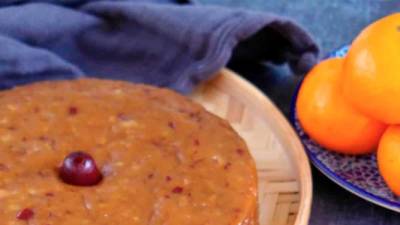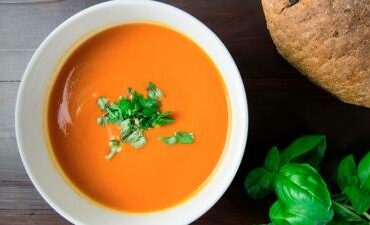AS the Lunar New Year approaches, families across the globe eagerly prepare for the festivities surrounding this auspicious occasion. At the heart of these celebrations lies the rich tapestry of flavours and symbolism found in traditional Chinese New Year foods. Dive into a culinary extravaganza as we explore eight irresistible dishes that grace the tables during this joyous time.
Nian gao (sticky rice cake)
Symbolising growth, progress and the promise of a better year, nian gao is a staple during Chinese New Year celebrations. The sticky rice cake is often steamed or pan-fried and can be sweet or savoury. Its chewy texture is believed to bring the family closer together and foster unity.
Jiaozi (dumplings)
Jiaozi, a symbol of wealth and prosperity, are a must-have during the Lunar New Year. Families gather to make these delightful pockets of goodness, usually filled with a mixture of minced meat, vegetables and seasonings. The shape of the dumpling resembles ancient Chinese currency, reinforcing the idea of wealth and good fortune.
Yu sheng (raw fish salad)
Yu sheng is a colourful and refreshing salad featuring raw fish, shredded vegetables and a medley of sauces and condiments. Assembled at the table, this dish is believed to bring abundance, prosperity and good luck for the coming year. The act of tossing the ingredients high in the air is a symbolic gesture of raising one’s fortune.
Fa cai (black moss seaweed)
Fa cai, also known as “hair vegetable” or black moss seaweed, is a delicacy that symbolises prosperity and good fortune. Its name sounds like “getting rich” in Chinese, making it a popular addition to dishes during the New Year. Often paired with other ingredients like mushrooms and oysters, fa cai adds a unique texture and depth of flavour to festive meals.
Tang yuan (sweet rice balls)
Tang yuan or sweet rice balls, are a symbol of family togetherness and reunion. Traditionally enjoyed during the Lantern Festival, these glutinous rice balls are filled with sweet or savoury fillings and served in a warm, flavourful broth. The round shape signifies completeness and unity within the family.
Dongpo rou (braised pork belly)
Dongpo rou, a classic dish named after the renowned Chinese poet Su Dongpo, features succulent, melt-in-your-mouth braised pork belly. The rich, savoury flavours symbolise abundance and wealth. This dish is a culinary masterpiece that requires slow cooking, resulting in a perfect balance of fat and meat, creating a sensation of indulgence fit for a festive feast.
Fried nian gao (fried glutinous rice cake)
An indulgent treat, fried nian gao is a delightful fusion of sweet and savoury. Sliced nian gao is pan-fried until crispy on the outside and chewy on the inside. Often paired with savoury ingredients like savoury meat or vegetables, this dish offers a delightful contrast of textures and flavours, signifying a harmonious blend of the old and the new.
Chang shou mian (longevity noodles)
No New Year celebration is complete without the inclusion of longevity noodles, representing a wish for a long and prosperous life. These uncut, lengthy noodles symbolise longevity and are often served in a flavourful broth or stir-fried with a variety of toppings.
Sharing and enjoying these noodles are believed to bring good luck and blessings for a healthy life. As we usher in the Chinese New Year, the dining table becomes a canvas for a vibrant palette of flavours and cultural significance.
Each dish plays a vital role in creating a festive atmosphere filled with joy, hope and the promise of a prosperous year ahead. Embrace the culinary traditions and savour the richness of Chinese culture with these eight irresistible traditional Chinese New Year foods.
May your celebrations be filled with good fortune, happiness and, of course, delicious meals. Gong Xi Fa Cai.









